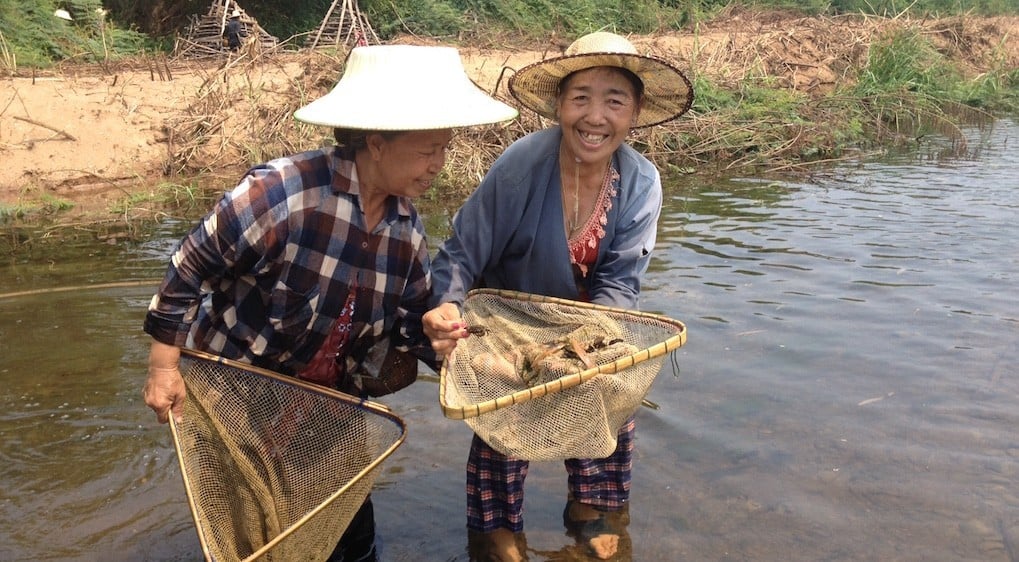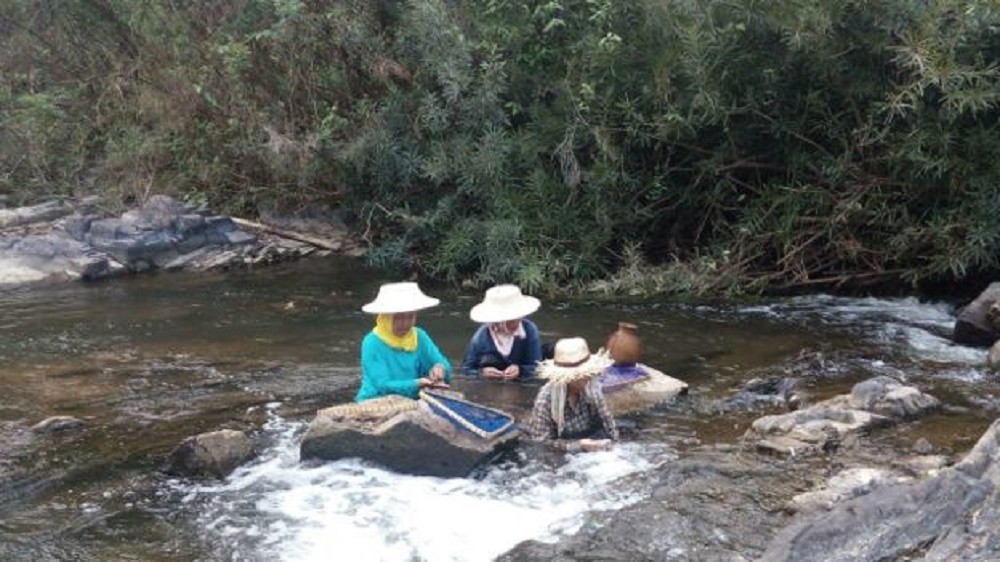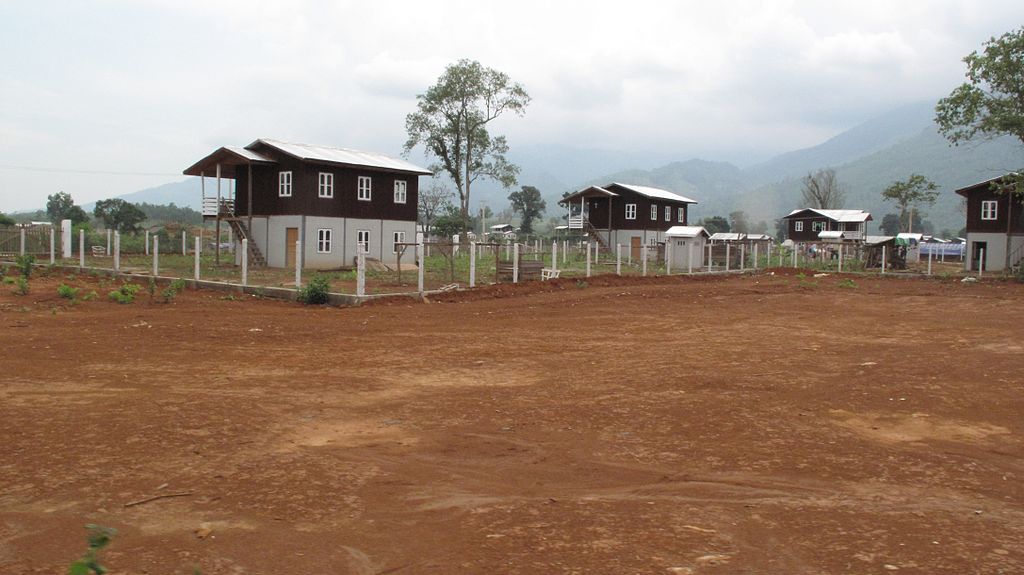Extensive irrigated agriculture in Northeast Thailand has long been a dream of the Royal Irrigation Department (RID). Over the decades, various visions have been expounded but never fulfilled, including the Green Isan Project in the early 1980s, the Khong-Chi-Mun Project in the late 1980s and 1990s, and the Water Grid Project in the early 2000s. Local communities and civil society have often challenged these projects, questioning the project’s economics and potential environmental and social impacts.
Recently, the RID has reinvigorated its irrigation plans through the “Mekong-Loei-Chi-Mun River Management and Diversion by Gravity in the Northeast” project. It entails diverting water from the Mekong River’s mainstream into the Loei River in Northeastern Thailand, which would then be connected via tunnels to the Chi and Mun Rivers.
According to official project statistics, the plan would expand the Northeast’s irrigated agricultural zone by almost 50,000 square kilometers (over 30 million rai). The project proponents claim that it would increase farm incomes from an average of just under 68,000 baht per family per year at present, to 199,000 baht, and improve the lives of 1.72 million families.
The project is currently being studied by Panya Consultants on behalf of the RID. An official of the RID in Loei province said the study on the Mekong-Loei-Chi-Mun project will be completed by end of 2016. They said the study will determine if the project is economically viable, and thus whether it should be deployed or not.
But the plans have bewildered local residents and worries Thai environmental activists. Furthermore, the proposed project has raised concerns from Cambodia and Vietnam, downstream along the Mekong River, who worry that Thailand’s water seizure could exacerbate water shortages in the dry season, especially during drought years as at present.
Bewildered Thai Puan villagers
Thai Puan is a village in Loei province of the Thai Puan ethnic minority group. Located alongside the Loei River at the proposed project site, several kilometers upstream of the confluence with the Mekong River, it has existed for around 400 years.
According to Ms. Sorrarat, the village head, the villagers of Thai Puan heard about the irrigation project in 2008 while attending a meeting with the provincial office. In around 2011, in another meeting with the local authorities, they heard about the project again, but it seemed that nothing was happening. However, at the beginning of 2016, the villagers once again heard about plans for the project.
Ms. Sorrarat says her biggest concern is that the project could flood residential areas when it diverts water into the Loei River from the Mekong River, and would change people’s livelihoods. She says “We do not know about the political nature of the project as well. Recently, there has been no official information from the authorities or from those who work on the project at all.”
According to Mr. Channarong Wongla, who is a representative of the Hug Chiang Khan group, the Thai Puan villagers do not want this project because they say that the water pipe will take local water to other places, and would not benefit people in the village itself. They are also concerned that plans for the project to expand the Loei River’s mouth to divert water from the Mekong River will make the whole area more susceptible to flooding, noting that because it is a lowland area it has already suffered from flooding in the past.
Mr. Wongla says that they want to keep the status quo of the current Loei River, because their lives have relied on the river for generations.
Following the Mekong Agreement?
In the 1995 Mekong Agreement, signed between the four governments of Vietnam, Lao PDR, Cambodia and Thailand that established the inter-governmental Mekong River Commission (MRC), the parties agreed to “cooperate in all fields of sustainable development, utilization, management and conservation of the water and related resources of the Mekong River Basin…”
According to Article 5, in order to “utilize the waters of the Mekong River system in a reasonable and equitable manner” projects on the tributaries of the Mekong River are subject to ‘notification’ to the MRC’s Joint Committee. Meanwhile, projects on the Mekong River’s mainstream that entail water diversion in the dry season will be subject to a more thorough ‘prior consultation’ process.
Given that the proposed project would draw water from the Mekong River’s mainstream, and would have implications for the downstream countries, it appears that ‘prior consultation’ is required with the neighboring country governments.
However, some have argued that there will be little impact in the dry season. A staff of Panya Consultants said that, according to the diversion plan, Thailand will divert around 4,000 million cubic metres of water per year. They argued that this would not affect the water volume of the Mekong River because Thailand would divert water according to river flow rate, with little or no water diverted during the dry season.
A representative of the RID interviewed, who preferred not to be named, said “We have not publicized this project yet because it is still under study, and it has not yet been officially approved. If it is approved and is proved to have transboundary impacts, we will follow the protocol of water use among Mekong countries.”
Internally, at least, work has continued on the project. The project’s latest pre-feasibility study was completed in 2008 and a feasibility study was completed in 2012. The RID then selected Panya Consultants to conduct an Environmental Impact Assessment, Social Impact Assessment and facilitate public participation since October 2015, with their work to be completed by December 2016.
The RID representative added “Watching the news recently, I see drought everywhere across the Mekong region. It is for us in Thailand too. Over the last two to three years, farmers cannot farm as they used to.”
Reflecting on the economic situation of farmers, the RID representative said that in Thailand the average income of farmers is more than 131,000 baht per year for a typical household. However, for farmers in the Northeast region, they earn less than 68,000 baht per year and they were in poverty. She said that they need irrigation to improve agricultural production.
They said, “Many people mistakenly think that this is a big project. Actually it is only a medium project, and will be evaluated on a yearly basis.”
However, it is estimated that the project takes 15 years of construction with investment of 2.69 trillion Thai baht (US$76.8 billion).
Need for an elaborated study on project impacts
Visiting the mouth of the Loei River, where it joins the Mekong, the impacts of this year’s drought are revealed. It is so shallow that the Loei River is connected to the Mekong River only by a narrow trench about 2 m wide. The river runs low due to the low rainfall in the dry season, and because of various small dams upstream made by local communities to block the river flow for irrigation.
Standing at the Loei River mouth, Mr. Yuttane Vongsopa, a researcher based in Loei from the Thailand Research Fund, said: “The unfinished part of this project is the ecological and livelihood impact evaluation.”
Despite the dry surroundings, Mr. Vongsopa recognizes that it is not a foregone conclusion that farmers actually want the project. He says, “The project needs to inform the communities and open itself up to community participation. People in Loei and along the Mekong should be invited to discuss openedly about the potential benefits and costs of the project.”
The proposed project is clearly ambitious in scope and scale. Because of this not only should a discussion be had with people locally in Loei and Northeast Thailand, but also with downstream countries in Cambodia and Vietnam which could face severe impacts from the river diversion but would not get any benefits.
This story was produced in collaboration with The Mekong Eye and Mekong Matters Journalism Network, with full editorial control to the journalist and their outlet.







